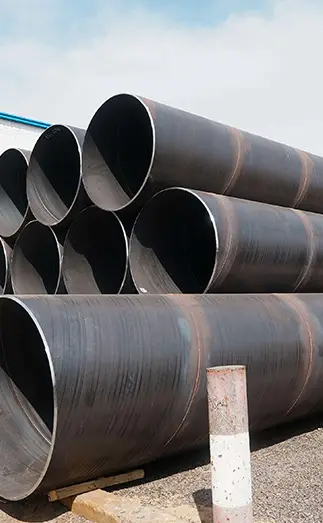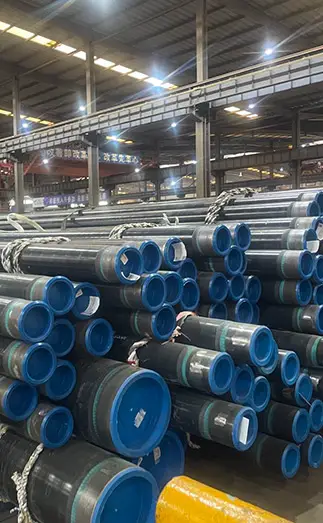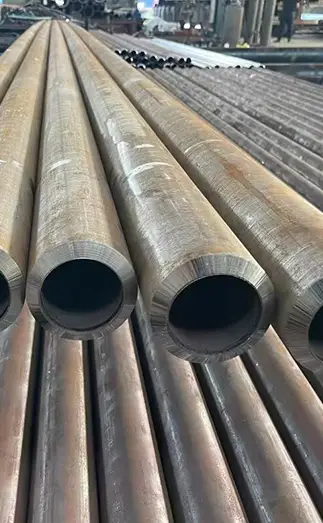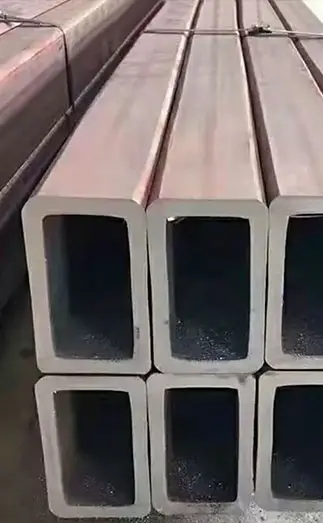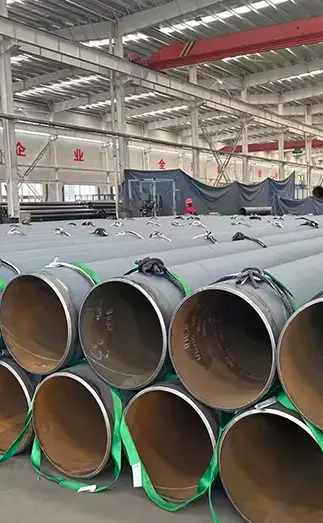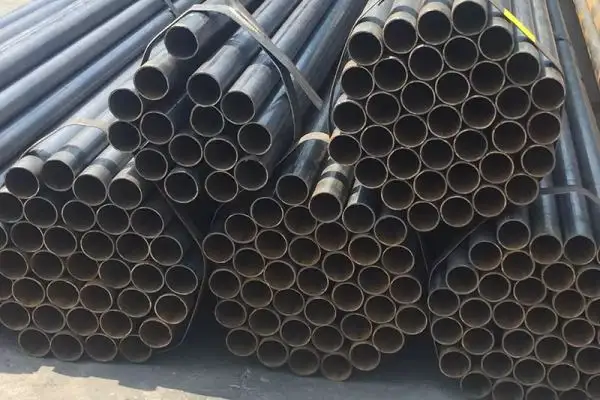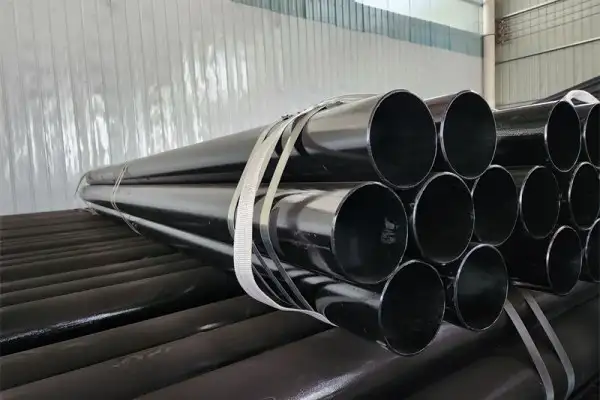09CrCuSb straight seam steel pipe is a specialized material developed for sulfuric acid dew point corrosion resistance, widely used in power generation, chemical engineering, and metallurgical flue gas systems.
The steel name reflects its composition: “09” indicates carbon ≤0.09%, while Cr, Cu, and Sb serve as the core alloying elements that jointly enhance corrosion resistance in sulfur-containing flue gas environments.
Manufactured through a straight seam welding process, this pipe offers stable performance and cost efficiency, making it a key material for FGD systems, boiler air preheaters, and GGH equipment.
1. Material Characteristics & Corrosion-Resistance Mechanism of 09CrCuSb Straight Seam Steel Pipe
The major advantage of 09CrCuSb steel is its ability to resist sulfuric acid dew point corrosion.
During combustion, sulfur generates SO₂, which condenses with water vapor in low-temperature zones to form corrosive sulfuric acid. Compared with ordinary carbon steel, 09CrCuSb forms a dense passivation film due to:
Cu – promotes stable surface protective layer
Cr – strengthens overall corrosion resistance
Sb – inhibits localized corrosion
Test results show that in 50% H₂SO₄ at 60°C, its corrosion rate is only 1/5–1/8 of Q235 steel, with a service life over 3× longer.
2. Production Process & Key Technical Controls of 09CrCuSb Straight Seam Steel Pipe
Straight seam welded 09CrCuSb pipes follow processes such as slitting, forming, welding, and sizing. Key controls include:
(1) Slab Quality
TMCP process to ensure uniform Cu/Sb distribution
Thickness tolerance of hot-rolled coil controlled within ±0.2 mm
(2) Welding Process
Common methods: HFW and SAW
Heat-affected zone temperature kept at 900–1100°C
Online heat treatment (e.g., induction annealing) to remove welding stress
(3) Non-Destructive Testing
100% ECT + UT inspection
Focus on detecting weld cracks and lack of fusion
3. Industry Applications & Typical Cases of 09CrCuSb Straight Seam Steel Pipe
Thermal Power Plants
Used in GGH casings, expansion joints, and FGD pipelines.
A 600 MW unit upgrade showed:
Replacing ND steel with 8 mm 09CrCuSb pipe
Flue service life increased from 2 years to 6 years
Maintenance cost reduced by ≈40%
Refinery Sulfur Recovery Units
Resistant to wet flue gas containing H₂S / SO₂, with working temperatures up to 150°C.
Note
Its chloride resistance is weak; for coastal power plants, anti-corrosion coating is required.
4. Market Status & Development Trends of 09CrCuSb Straight Seam Steel Pipe
Domestic production capacity exceeds 100,000 tons per year.
Prices are generally 20–30% higher than ordinary weathering steel, but the life-cycle cost is more competitive.
Current R&D Directions
Composite structures: 09CrCuSb + carbon steel to reduce cost
Intelligent welding: laser vision welding robots, defect rate <0.1%
Green standards: GB/T 29732-2024 encourages optimized alloy ratios and recyclability
5. Usage Recommendations & Precautions of 09CrCuSb Straight Seam Steel Pipe
(1) Material Selection
For flue gas velocity >15 m/s → use ≥10 mm wall thickness
For low-temperature areas (<60°C) → allow slightly lower alloy content
(2) Installation Standards
Use ER55-CuSb welding wire to avoid galvanic corrosion
Pipe support spacing ≤ 80% of the standard limit to prevent vibration wear
(3) Maintenance Strategy
Inspect wall thinning yearly using endoscope
Focus on weld HAZ
If corrosion depth > 30% of wall thickness, perform overlay welding or partial replacement
Conclusion
Engineering cases have proven the maturity and reliability of 09CrCuSb straight seam steel pipe. With tighter environmental regulations (SO₂ ≤35 mg/m³), the development of higher-grade variants containing Mo and Ni may be needed in the future. For now, proper selection, standardized construction, and scientific maintenance are essential to maximize its performance advantages.
FAQ 1: What are the advantages of 09CrCuSb compared with ND steel?
09CrCuSb provides significantly stronger resistance to sulfuric acid dew point corrosion, offering 2–3 times longer service life and more stable weldability. It is better suited for highly corrosive environments such as FGD and GGH systems.
FAQ 2: Can 09CrCuSb straight seam pipes be used in chloride-containing environments?
Direct use is not recommended. The material is sensitive to chloride ions. In coastal power plants or Cl⁻-rich conditions, it should be paired with protective coatings or composite structures.
FAQ 3: What is the maximum operating temperature for 09CrCuSb straight seam steel pipes?
For wet flue gas applications, the recommended maximum temperature is ≤150°C. Beyond this temperature, the stability of the protective film decreases, and higher-grade corrosion-resistant materials may be required.



 English
English Español
Español Français
Français بالعربية
بالعربية